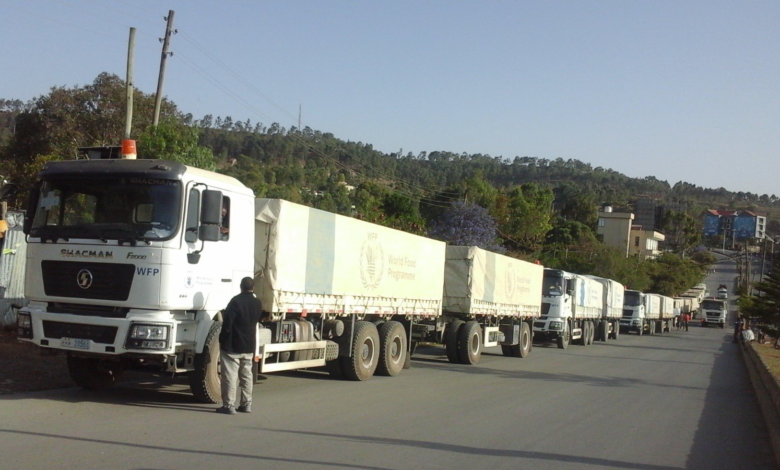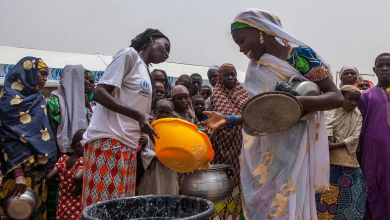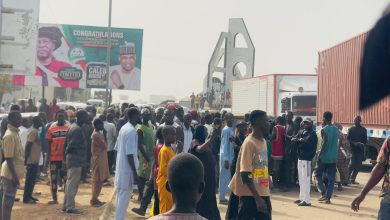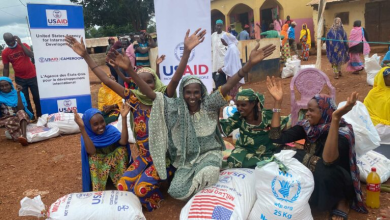Ethiopia: ‘Despite Truce, Aid Is Insufficient In Tigray’ – WHO Chief
Human rights groups say the war in Tigray amounts to ethnic cleasing which includes discriminatory aid blockade.

Aid materials, including medical supplies, are insufficient to sustain life in conflict-ridden Tigray, Northeast Ethiopia, despite a humanitarian cease-fire reached in March, Tedros Adhanom Ghebreyesus, the Director-General of the World Health Organisation (WHO) said.
Ghebreyesus said not enough supplies were reaching Tigray where the fighting between Ethiopian government forces and the rebel Tigray People’s Liberation Front (TPLF) has left thousands dead, forcing more than two million people from their homes since Nov. 2020.
“Current supplies of food are too little to sustain life. The health system has collapsed. People are starving to death — and it is intentional,” the WHO chief said in a Twitter post on Wednesday, May 11.
He said only one aid convoy, which included 17 trucks of humanitarian assistance, crossed into the Tigray region last week carrying food, water, and sanitation supplies to a population desperately in need of aid.
Since the humanitarian truce was declared, only 172 trucks made it to the region, which is just 4 per cent of the overall need in Tigray, he said Wednesday, May 4.
But the World Food Programme (WFP) also said 170 trucks made it to Tigray in April, providing food for eight per cent of its target population.
The WFP said another convoy of 64 trucks was on its way to Mekelle, Tigray’s capital, with food aid.
Aid blockade
From the onset, the war in Tigray, which later spread to the neighbouring Afar and Amhara regions, interfered with the delivery of aid.
In May 2021, humanitarian actors accused the Ethiopian government of impeding aid shipments and of singling out Tigray for aid blockade.
A March 2022 report by Human Rights Watch and Amnesty International said amid a campaign of ethnic cleansing, Amhara and Walqayte authorities have deliberately denied access to aid to Tigrayans in western Tigray.
In trying to gain access, humanitarian workers have faced dangers during the conflict. At least seven have been attacked and killed while working in the region since the war began.
A New York Times investigation published in March found that Ethiopian soldiers were most likely responsible for killing three aid workers with Doctors Without Borders in the Tigray region in June 2021.
When the government declared the truce, aid actors were hopeful that it would translate to an estimated 5.2 million people receiving life-saving assistance immediately.
The government of Prime Minister Abiy Ahmed, in announcing the unilateral truce, said it was acting because thousands of people from Tigray had begun flooding into bordering regions seeking help.
“While it is heartening to see the fraternal bond and solidarity that is being demonstrated by communities that are receiving and helping those in need of assistance, the government believes that the situation warrants urgent measures to ensure that those in need are able to receive aid in their localities,” the government said in a statement on Twitter and on Facebook.
Although the war’s true toll is unknown, researchers from Belgium’s Ghent University estimate as many as half a million people have died so far: between 50,000 and 100,000 from the fighting, 150,000 to 200,000 from starvation and more than 100,000 from the lack of medical attention.
Worsening conditions
Like elsewhere in the Horn of Africa, the situation is compounded by drought conditions across the country’s northern region.
In the region, more than 9.4 million people are in dire need of food and other aid.
In Afar, 600,000 people have been targeted for food aid; recently, one humanitarian organisation reached 68 per cent of those targeted, while another reached 33 per cent.
Recent food distribution in Amhara reached more than 90 per cent of the target population.
But the United Nations Office for the Coordination of Humanitarian Affairs said humanitarian groups only have 560 metric tonnes of food commodities left within Tigray because of the limited aid deliveries.
According to the UN humanitarian agency, this falls drastically short of at least 4,675 metric tonnes of food commodities — or 115 trucks — needed each day to serve the 5.2 million people in need in the region.
For lactating and pregnant women, the reality of going hungry on a daily basis is harsh.
“I have survived my pregnancy on hardly one meal a day. Now, I am concerned about my baby’s health as we are living on minimum food in the camp,” Daniet, who fled western Tigray with four of her seven children in early April 2021, told the UN during a postnatal care check-up at the maternity clinic in Sabacare 4, an internally displaced person (IDP) camp on the outskirts of Mekelle, Tigray Region.
The WHO chief asked Ethiopian and Eritrean governments to “end the siege and allow sustained access for aid.”
Support Our Journalism
There are millions of ordinary people affected by conflict in Africa whose stories are missing in the mainstream media. HumAngle is determined to tell those challenging and under-reported stories, hoping that the people impacted by these conflicts will find the safety and security they deserve.
To ensure that we continue to provide public service coverage, we have a small favour to ask you. We want you to be part of our journalistic endeavour by contributing a token to us.
Your donation will further promote a robust, free, and independent media.
Donate HereStay Closer To The Stories That Matter




